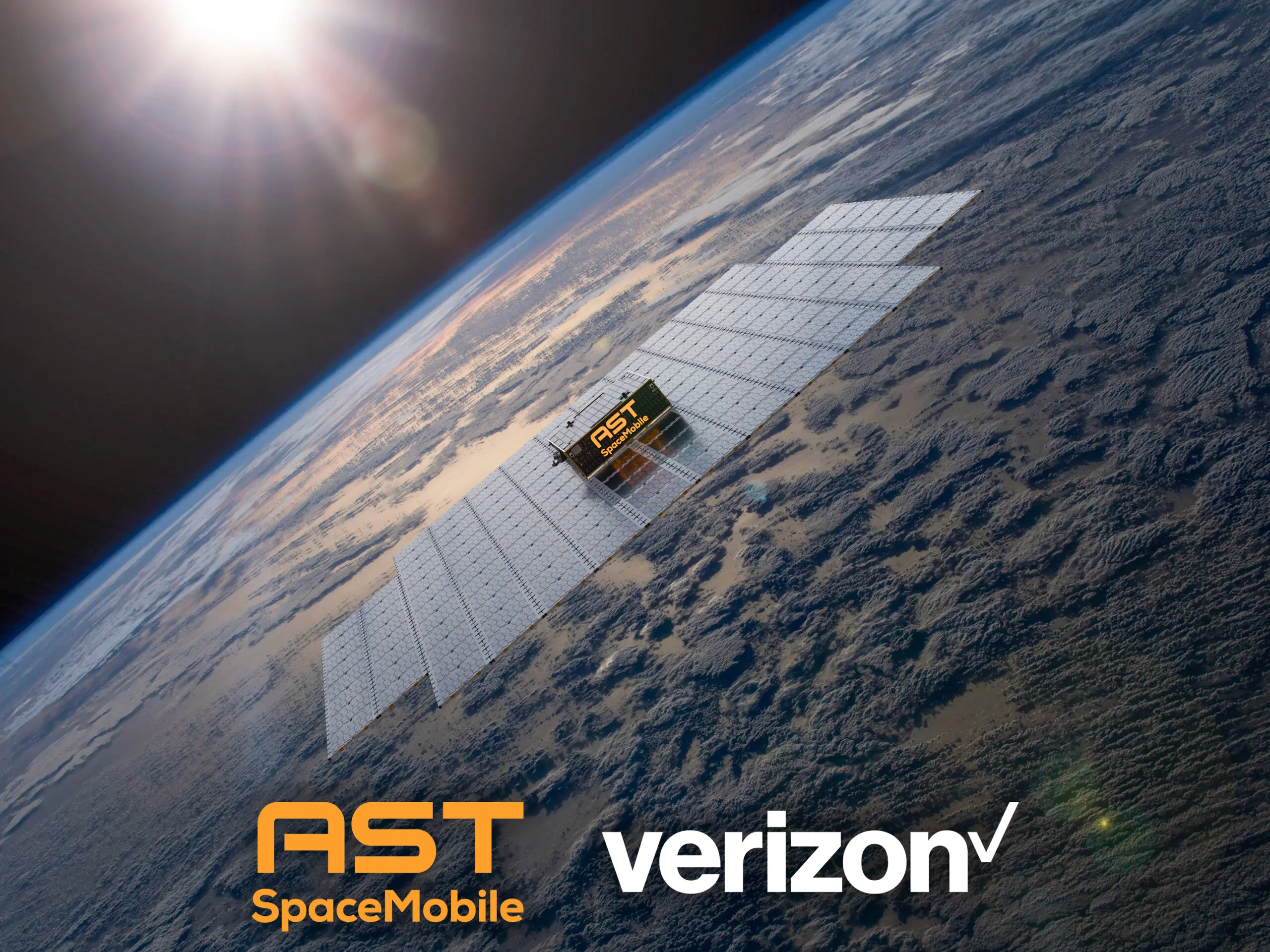AST SpaceMobile, Verizon strike deal for direct-to-cellular using 850 MHz

Verizon makes a $100 million commitment to AST
AST SpaceMobile has followed up a commercialization announcement with AT&T with the news today that the satellite company has struck a deal with Verizon to provide direct-to-cellular service to the carrier’s customers and leverage Verizon’s 850 MHz spectrum.
AST said that between the two carrier deals, it will aim to enable 100% coverage of the United States for their customers. Verizon is making a $100 million commitment to AST SpaceMobile, which comprises $65 million in commercial prepayments plus $35 million of convertible notes. AST struck similar deals with AT&T and Vodafone earlier this year.
“Verizon has always been strategic and efficient with our spectrum strategy. We use the spectrum entrusted to us to deliver outstanding cellular service for our customers through our terrestrial network. By entering into this agreement with AST, we will now be able to use our spectrum in conjunction with AST’s satellite network to provide essential connectivity in remote corners of the U.S. where cellular signals are unreachable through traditional land-based infrastructure,” said Srini Kalapala, SVP of technology and product development at Verizon.
“This new partnership with Verizon will enable AST SpaceMobile to target 100% coverage of the continental United States on premium 850 MHz spectrum with two major U.S. mobile operators in the most valuable wireless market in the world, a transformational commercial milestone,” said Abel Avellan, who is founder, chairman and CEO of AST SpaceMobile. “This partnership will enhance cellular connectivity in the United States, essentially eliminating dead zones and empowering remote areas of the country with space-based connectivity.”
AST SpaceMobile announced a commercial agreement with AT&T just weeks ago. As part of that agreement, AT&T Head of Network Chris Sambar joined AST’s board of directors. The two partners called their agreement “not just one small step, but one giant leap towards enhanced connectivity for consumers and businesses across the country” in a joint release.
AT&T also said that AST is planning to deliver its first five commercial satellites to Cape Canaveral this summer, for launch into low Earth orbit (LEO), which will enable the commercial service. AT&T and AST have already been conducting joint testing of various services, including a recent test of streaming video; those tests have encompassed T&T’s 850 MHz spectrum as well as its FirstNet 700 MHz spectrum, and AST also has permission through May of 2025 from AT&T to test using higher-frequency spectrum at 37.6-40 GHz.
In January, AST said that it was primed for commercial service launch with new funding from AT&T, Google, Vodafone and a line of credit. Those investments encompassed $20 million in revenue commitments from AT&T that were predicated on the successful launch and operation of AST SpaceMobile’s first five commercial satellites, and a minimum $25 million in revenue commitments from Vodafone. Both carriers placed purchase orders in undisclosed amounts for AST SpaceMobile network equipment that will support planned commercial services.
Meanwhile, however, AST’s five Bluebird satellites of its anticipated constellation have been repeatedly delayed due to supplier issues. The company had first planned to launch them before the end of 2023, then expected to launch in the first or second quarter of 2024; Avellan has said that the satellites are now expected to be transported to the launch site between July and August 2024.
AST SpaceMobile said that its BlueWalker 3 satellite currently has the largest-ever commercial communications array in low Earth orbit. It also has satellites in the works with beams designed to support capacity of up to 40 megahertz, which AST SpaceMobile says will could potentially enable data speeds of up to 120 Mbps.

Comments are closed.